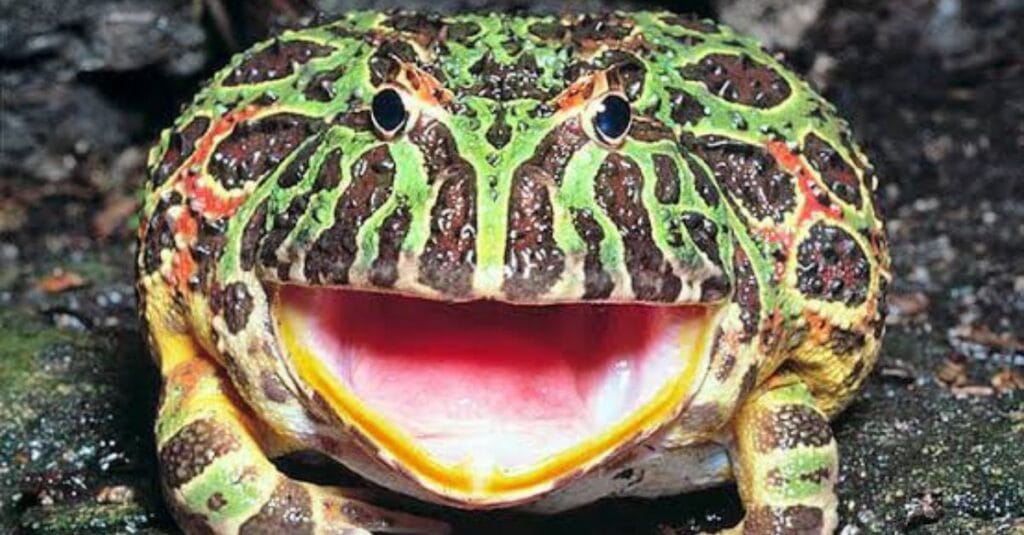🐸 Live vs. Frozen Prey for Pacman Frogs
Which Feeding Option Is Best for Your Horned Amphibian?
Live vs. Frozen Prey for Pacman Frogs - At a Glance
Live prey stimulates your Pacman frog’s hunting instincts and is more natural, while frozen/thawed prey offers convenience and reduced risk of injury. Both have pros and cons. Learn when to use each method and how to safely prepare frozen prey for optimal nutrition and safety.
Feeding your Pacman frog can be as simple as tossing in a cricket—or as complex as preparing a thawed pinky mouse. But is live prey better than frozen/thawed food? The answer depends on your frog’s age, preferences, and your comfort as a keeper.
In this article, you’ll learn:
The benefits and risks of live vs. frozen prey
When to use each type
How to safely feed both kinds
What foods work best for each method
Tips to avoid common feeding mistakes
Pros and Cons of Live Prey
Live prey is the most natural food source for Pacman frogs, especially since they are ambush predators in the wild.

Pros of Live Prey
Triggers natural hunting behavior
Encourages movement and enrichment
Easy to source (crickets, worms, roaches)
Generally more accepted by picky eaters
👉 What Do Pacman Frogs Eat? Complete Feeding Guide
👉 Pacman Frog Feeding Schedule by Age

Cons of Live Prey
Can injure your frog if left in the tank (e.g., crickets biting)
May cause stress if too fast or aggressive
Requires gut-loading and dusting for nutritional value
Can escape or hide in the enclosure
Pros and Cons of Frozen/Thawed Prey

Frozen prey (especially pinky mice or pre-killed insects) is nutritionally dense and more convenient for some owners.
Pros of Frozen/Thawed Prey:
Lower risk of injury to your frog
Easier to store long-term
Cleaner and less smelly than live feeders
Good for adult frogs that can consume large meals
Cons of Frozen/Thawed Prey:
Not all frogs will accept non-moving food
Requires safe thawing techniques
Can cause impaction if too large or too cold
May lack motion to trigger feeding response
When to Use Each Type
| Situation | Best Prey Type |
|---|---|
| Young/baby frogs | Live (small insects) |
| Feeding daily or often | Live (economical + stimulating) |
| Feeding adult frogs | Frozen/Thawed pinkies or large worms |
| Sick or stressed frogs | Live, easy-to-catch prey |
| Convenience needed | Frozen, pre-portioned and pre-killed |
| Preventing injuries | Frozen, safer than live crickets |
How to Safely Feed Frozen/Thawed Prey
Use only prey labeled for reptiles/amphibians
Thaw in warm water (never microwave)
Ensure food reaches room to body temperature
Use tongs to simulate movement
Never refreeze unused thawed prey
⚠️ Never feed prey straight from the freezer or fridge—cold food can shock your frog’s system.

How to Feed Live Prey Safely
Supervise feeding time
Remove uneaten prey within 30–60 minutes
Gut-load insects 24 hours beforehand
Dust with calcium/D3 powder before feeding
Avoid aggressive prey (e.g., adult crickets with strong mandibles)
Nutrition Tips for Either Method
| Tip | Why It Matters |
|---|---|
| Rotate prey types | Prevents nutrient deficiencies |
| Supplement with calcium/D3 | Supports bone and immune health |
| Adjust feeding schedule by age | Prevents obesity or malnutrition |
| Monitor poop and behavior | Indicates digestion and health status |
Final Thoughts
Both live and frozen prey can play a role in a balanced Pacman frog diet. Live insects offer enrichment and ease for young frogs, while frozen/thawed meals are safer and more practical for adults. Use what works best for your frog’s size, age, and feeding response—and always prioritize safety and nutrition.
FAQ: Live vs. Frozen Food
Q: Can I train my frog to eat frozen/thawed food?
A: Yes! Use tongs to mimic movement. Be patient—it may take a few tries.
Q: Are pinky mice safe for frogs?
A: Yes, for adult frogs only, and no more than once a month to prevent obesity and digestive issues.
Q: Is one method better than the other?
A: Both are valid. Live prey works best for younger frogs and frequent feeding, while frozen is safer and more convenient for adults.
